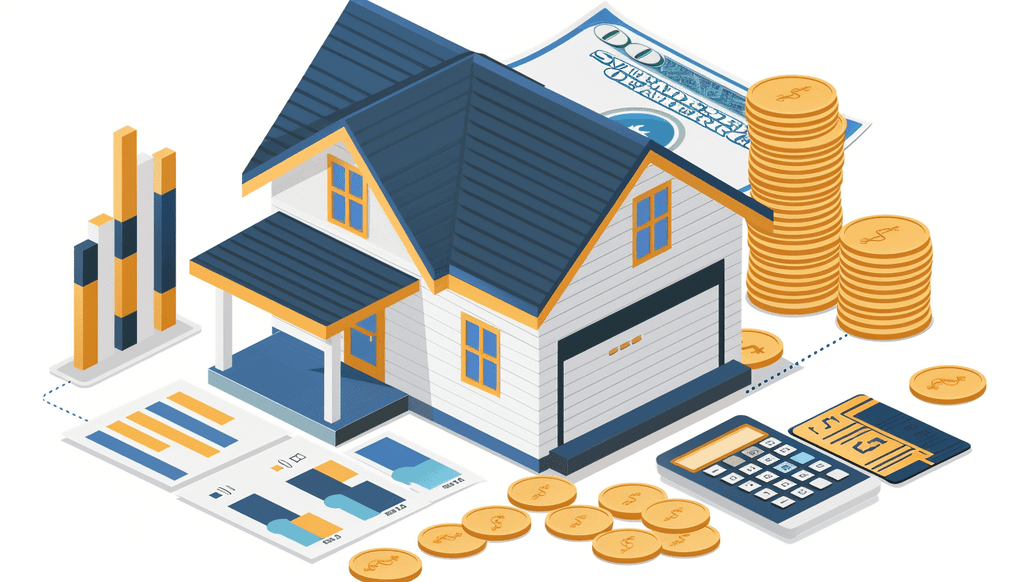Mortgage Interest Deductions Explained

Paying taxes is never a pleasant experience. Despite it being a cornerstone of the modern economy, the benefits of taxation are so interwoven with the fabric of our daily lives that they become hard to spot. The good news is that there are some situations where this financial burden can be lifted to a certain degree. For example, if you plan to become a homeowner, you can benefit from a mortgage interest deduction. If you use this opportunity, you will have to pay less in taxes in the following year.
Is mortgage interest deductible? What is the mortgage interest standard deduction? What do you need to claim this deduction? In this article, you will find the answer to all of these questions.
Mortgage Interest Tax Deduction: the Basics

How does mortgage interest deduction work? To put it simply, mortgage interest deduction allows property owners to deduct a certain part of the interest they pay from their taxable income. Keep in mind that the deduction is limited to the interest paid and can’t be used with the down payment or the mortgage principal.
An individual can claim an interest deduction whether they have chosen a government-backed mortgage (FHA, VA, etc.) or a private loan.
The next logical question is, “How much mortgage interest can I deduct from my taxes?” This depends on when you took out the mortgage and also your tax filing status. The mortgage interest deduction also comes with a rather substantial list of eligibility conditions. Naturally, these can also impact your mortgage interest deduction limit.
How can you discover your eligibility for this deduction? We suggest contacting a specialist. The conditions vary depending on whether it is your main home or second home, as well as other factors. To qualify, your mortgage must also be secured by your main or second home. For other properties, mortgage interest is deductible only if the loan proceeds are used for deductible purposes like investment or business expenses.
There are also special MID instances related to mortgage late payment charges, the property in question getting sold, and mortgage prepayment penalties. If you want more details, either look through the IRS Publication 936 or hire a specialist to consult you.
Claiming Mortgage Interest Deduction: Step-by-Step Guide

If your mortgage is eligible for the deduction, there are several essential things you should keep track of.
Make sure you have Form 1098
Individuals who paid more than $600 in interest the previous year should receive a free Form 1098 from their lender in the mail. It has to arrive between January and early February of each year. The form details your total interest paid and is also sent to the IRS to ensure your tax return aligns with their records.
Take care of all your records
As it was mentioned previously, there are a range of instances that allow you to start deducting mortgage interest. For example, if you rented out a part of your home or used mortgage proceeds to invest in a business, you are likely qualified for the deduction. The most important thing here is to keep good records so you can prove your eligibility if necessary. The data you might have to provide includes square footage, expenses related to parts of the house, any income derived from renting, and more.
Itemization is crucial
Before claiming mortgage interest deduction, you must fill out Schedule A of Form 1040. What this means is that instead of going the standard deduction route, you will have to complete the process of itemization.
There are two ways you can do so. If you see that itemized deductions add up to less than your standard deduction, you should simply choose the standard deduction. However, if itemized deductions can provide you with more benefits than the standard deduction, you should probably itemize to save more money.
You can use specialized tools, such as TurboTax or TaxSlayer, to deduct mortgage interest. These apps allow you to take full advantage of tax breaks and have lots of convenient features.
Consider refinancing
Refinancing can significantly reduce your interest payments, decreasing the deduction amount you can claim while still saving you money. Consider refinancing through Freddie Mac’s ReFi Possible or Fannie Mae’s ReFi Now programs.
Common mistakes
Try to avoid these common pitfalls:
- Claiming a higher sum for the mortgage interest deduction;
- Losing records of your home-related expenses;
- Claiming deduction for unqualified properties;
- Choosing mortgage interest deduction in cases when standard deduction is more profitable;
- Trying to claim a deduction for homeowner insurance, settlement costs, deposits, down payments, and other non-deductible home-related expenses.
Impact of Interest Deduction on Your Finances

The mortgage interest deduction can significantly impact your taxes, providing more advantages than the standard deduction in certain cases.
Your potential savings are calculated as follows. First and foremost, remember that you can only deduct interest on the initial $750,000 of your home mortgage each year. If the mortgage is taken out jointly by a couple, yet they file separately, the limit will be split equally between them.
Let’s analyze a real-life example. If you pay $14,000 on mortgage interest and your income tax rate is 24%, it means that you will be allowed to exclude $14,000 from your liability. To calculate how much you can save, multiply your mortgage interest by your income tax rate ($14,000x24%). In this case, you’ll be able to save $3,360.
Conclusion
What is the mortgage interest deduction? Its definition is rather simple, and yet there are enough nuances to give a professional consultant pause. In many cases, going for a standard tax deduction is not only easier but also allows you to save more money. However, there are also some situations when itemizing is a better solution, so you should always check which one can give you more benefits.
Finally, if you lack the necessary experience to analyze numerous conditions and exceptions associated with mortgage interest deduction, consider hiring a professional.




